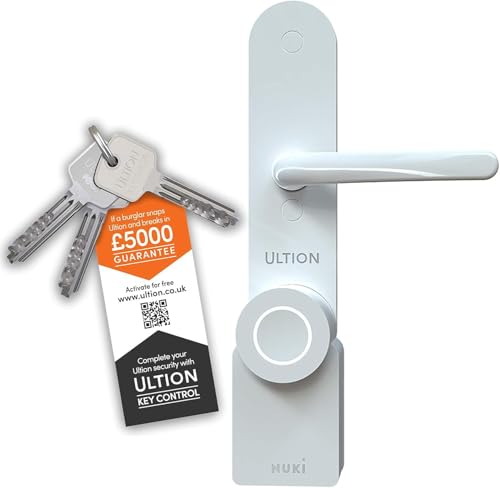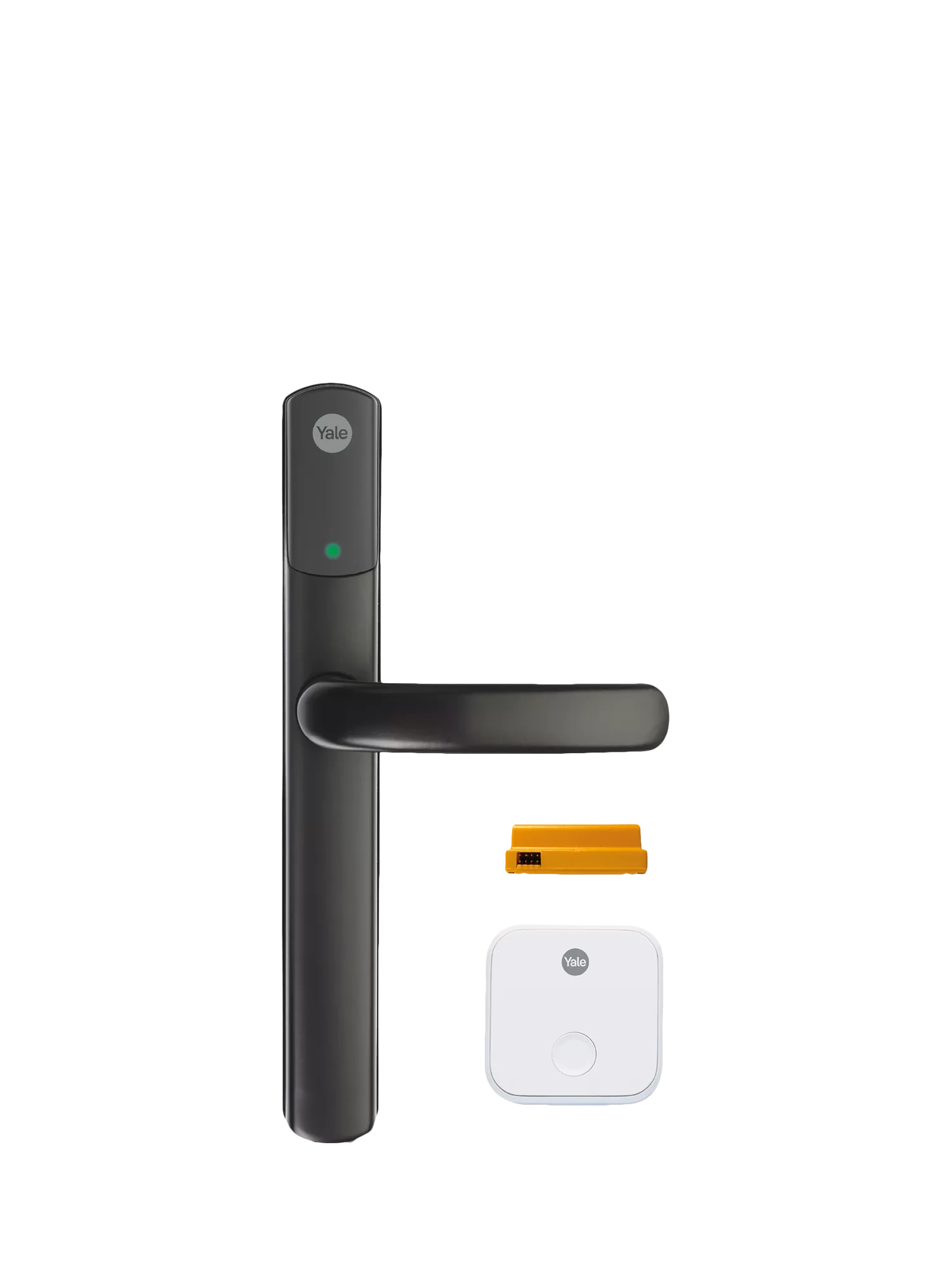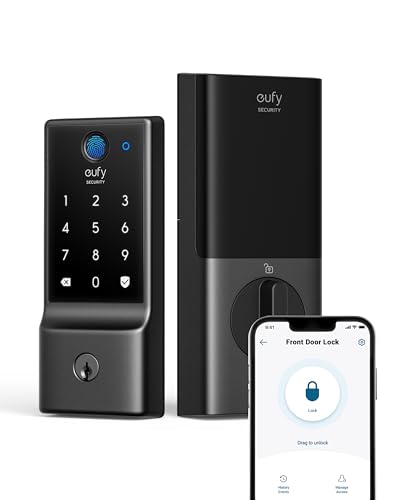What is a smart lock? All you need to know about this home security solution
Discover the pros and cons of replacing traditional versions with smart locks plus what to look for when buying them
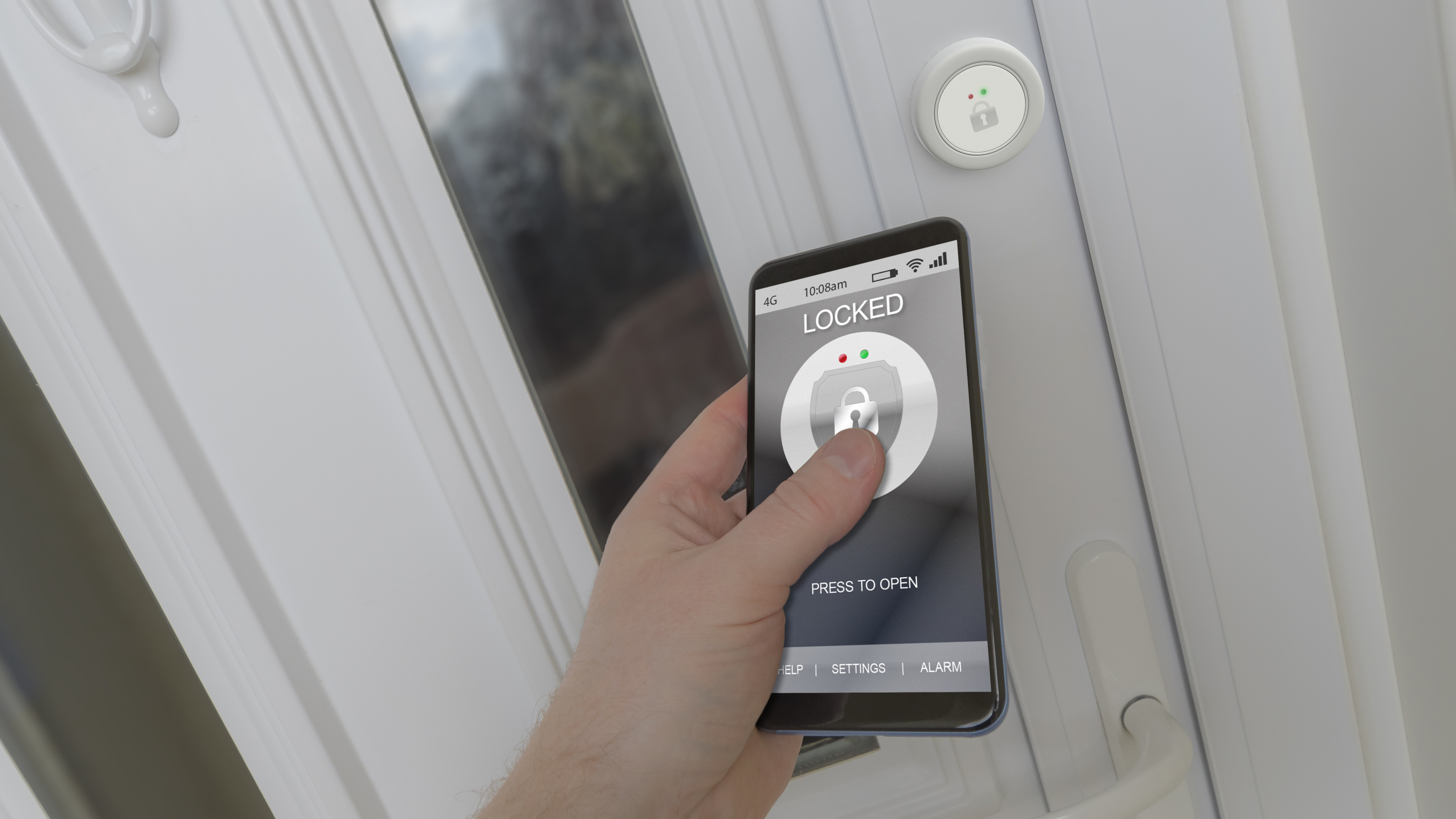
The doors to a home have traditionally been secured by lock and key. Swap to a smart lock, though, and keyless entry and remote control and monitoring of door entry is possible.
High quality smart locks can be a useful feature within home security systems, preventing unauthorised entry as efficiently as traditional locks. And they have additional benefits that could make them a far more convenient choice for a home.
In order to decide if smart locks are the best option for you, though, it’s essential to understand how they work and how easy it is to integrate them with other smart home options, plus know what to check for when you’re buying to optimise security. Here, we’ve put together all the details you need.
What is a smart lock?
A smart lock can enhance or replace an existing lock. “Smart locks are an increasingly popular upgrade for anyone looking to modernise home access,” explains Anthony Neary, security expert at Safe.co.uk. “Put simply, they let you unlock your door using a smartphone app, PIN code, or even voice command, instead of a traditional key.
“Some models replace the deadbolt only, while others take over both the latch and handle. Integrated smart locks are a more complete option, offering a streamlined look and full digital control.”

Anthony Neary is the founder and security expert at home and business security retailers Safe.co.uk. With over 15 years of industry experience, he specialises in security solutions and how to keep properties safe.
How smart locks work
A smart lock is an electronic lock that can be connected to your smart phone. This is achieved through what are known as wireless protocols such as wifi, Bluetooth, Z-wave, Zigbee and Matter.
Along with allowing unlocking via an app on your phone, a number of other access methods may be available. As noted above, these can include keypads and PIN codes, while some smart locks have biometric access systems using fingerprints, or methods such as palm scans, facial recognition or voice patterns, for example.
Bring your dream home to life with expert advice, how to guides and design inspiration. Sign up for our newsletter and get two free tickets to a Homebuilding & Renovating Show near you.
You might also want to consider a smart lock that offers a fob as an alternative access method. One of these is available as an option with the Ultion Nuki Plus smart lock, which also has KeyControl to prevent unauthorised copying, and a LockDown mode lock triggered by signs of forced entry.
Smart locks need power and this comes from batteries, including in some models rechargeable batteries. A wired-in smart lock is an alternative.
Shop smart locks
Pros of smart locks
Convenience is a plus point of smart locks because they allow keyless entry to a home for you and your family.
Remote access and monitoring are useful so that you can lock the door without returning home if you have forgotten to do so, or let someone in when you’re not there. Notifications allow you to see if the lock has been used or even tampered with.
Temporary and guest access mean you can let in visitors, for example, when they’re staying with temporary access codes or digital keys. Because you don’t need to have a new key cut as you would with a traditional lock, your security arrangements simply return to normal after the visit.
Enhanced security because you can respond to a breach or something suspicious, locking or unlocking the door, calling the police, or checking access logs.
Cons of smart locks
Battery life “You’ll need to stay on top of battery life to avoid being locked out,” points out Anthony Neary (see below for advice).
Tech issues can occur. “That is, glitches, lost connectivity, or even poor app integration,” says Anthony. There’s also security to consider, and there’s more on this below.
Costs are usually greater than with a traditional lock (see below).
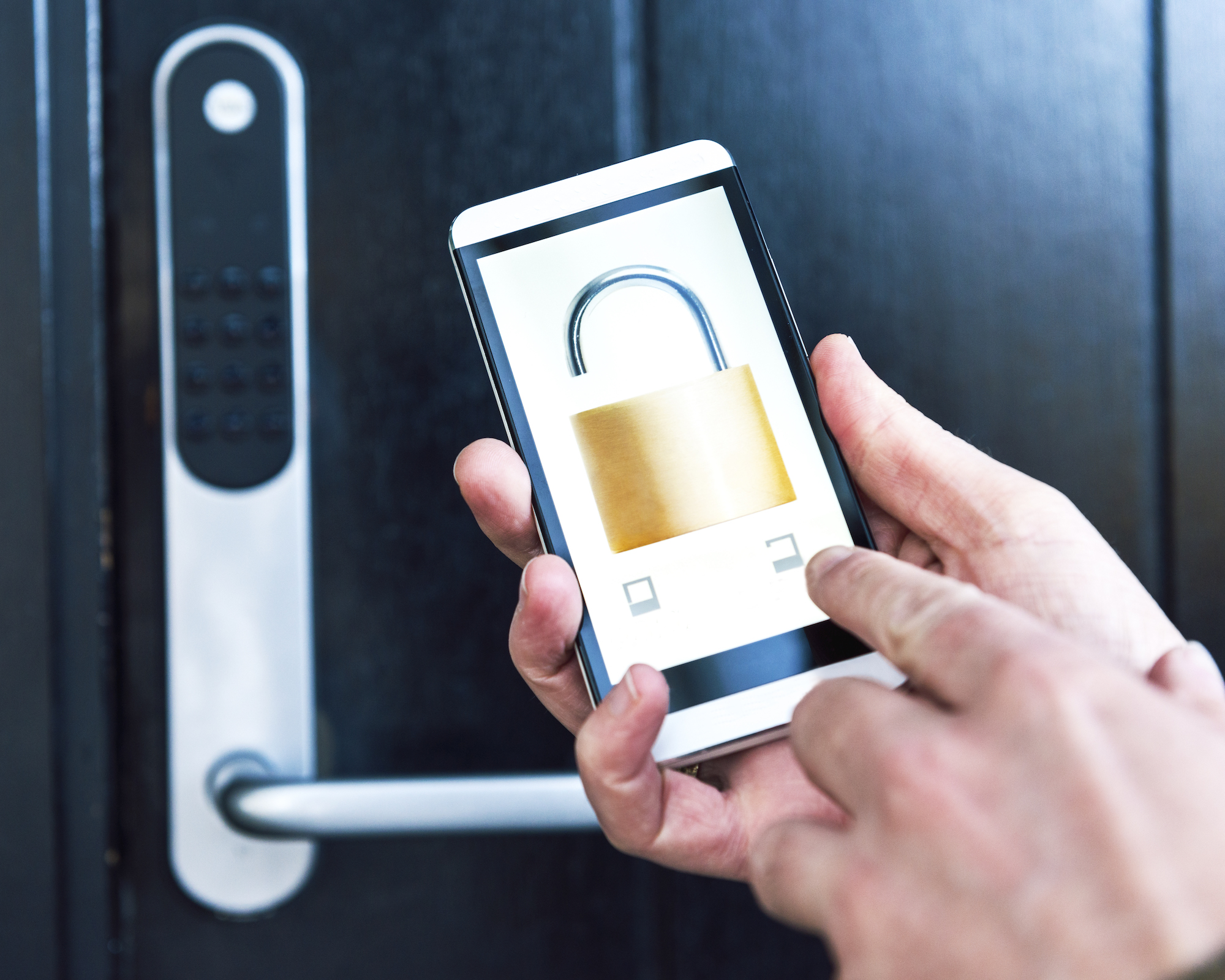
Integrating smart locks with smart home systems
Smart locks can be a part of smart home systems. “Integrating smart locks into a modern smart home system is relatively straightforward,” says Nicolai Landschultz, founder and managing director of smart home specialists IndigoZest.
“Most smart locks today are designed to work with common protocols such as Z-Wave, Zigbee, Apple HomeKit, or more advanced platforms like KNX or Control4, allowing them to be part of a broader ecosystem that can automate security, lighting, and even heating,” he explains.
You’ll need to check a particular smart lock before buying if you want it to work with your existing tech, but many are compatible with Amazon Alexa, Google Home, and Samsung SmartThings.

Nicolai Landschultz is the founder and managing director of IndigoZest, a company specialising in smart home solutions. Nicolai founded IndigoZest in 2010, driven by his passion for smart technology and its application in the home. He serves on the governance committee for CEDIA, the national body for smart homes, and is a CEDIA-certified professional.
Installing smart locks
You could install a smart lock yourself and many are designed for DIY installation coming with instructions and hardware. However, while professional installation comes at a cost, it does provide reassurance that the lock will provide maximum security and installation will likely be speedier. When weighing up whether to DIY or call in a professional, bear in mind that a warranty can be voided if the lock is not correctly installed.
It’s important to consider your current set up before investing in smart locks. “Double-check the measurements and configuration of your door before buying,” advises Anthony Neary. “Look at the existing lock type, and ensure the smart lock you’re choosing is compatible. Some models are retrofit and sit on the inside of your door, which is ideal if you’re upgrading without changing the whole unit. Also factor in how you’ll power the lock and whether you need a wi-fi bridge for remote access.”
If you want a retrofit option, you could consider Burg-Wächter’s secuENTRY Active, an electronic motorised lock that you can buy easily from Amazon. Installed over the interior side of an existing Euro cylinder lock it allows the door to be opened via an app.
As for the law? “From a regulatory standpoint, there are generally no legal barriers for private homeowners looking to install smart locks,” says Nicolai Landschultz.
“However, in multi-dwelling buildings or rental properties, there may be specific regulations or insurance requirements to consider. It is worth checking this with your insurance provider to see what standards they except. In the European market, particularly, data privacy regulations like GDPR may come into play if the locks are collecting or storing user data,” he adds.
Security of smart locks
Security is always a top priority when it comes to smart home technology, and smart locks are no exception, points out Nicolai Landschultz.
“Like any connected device, smart locks can be vulnerable to hacking if not properly secured, which is why we recommend manufacturers that implement strong end-to-end encryption — ideally AES-256 — and support two-factor authentication for user access.
“Homeowners should also consider the physical aspects, such as the quality of the lock’s build, and ensure tamper alerts are enabled,” he recommends.
As we mentioned above, battery life is also an issue. “Most smart locks run on batteries, so it’s important to check battery levels regularly, but many come with backup options like emergency power contacts or even traditional keys,” says Nicolai.
Be aware, too, that there are differences between smart locks designed for the US and European markets. “This often comes down to how the doors themselves are constructed,” explains Nicolai. “In the US, most doors are fitted with single deadbolt locks, so many smart lock systems are built to replace or work alongside that format. In Europe, however, doors typically use a Euro cylinder or multipoint locking mechanism, which means smart locks here need to either retrofit existing cylinders or integrate with these more complex locking systems.
“Additionally, there are different safety and power standards to consider,” he adds. “European models must meet CE and EN certification standards, and often run on different wireless frequencies than their US counterparts. So, it’s not simply a matter of ordering a smart lock online: it’s essential to ensure the product is fit for the local market both in terms of compatibility and compliance.”
Costs and value of smart locks
Smart lock costs start from around £100 for a basic version. However, for models with a large range of features expect to pay from around £300.
While likely to cost more than a traditional lock initially, a smart lock’s features including alerts and temporary access along with its convenience can make it good value over the long term. What is crucial to the enhanced security it can offer, though, is opting for a design that meets stringent standards.
If you’re designing a lifetime home, it’s worth opting for smart locks. They’ll offer security now while, in the long term, they can allow access in case of a fall or accident, so are a useful futureproofing measure.
Sarah is a freelance journalist and editor writing for websites, national newspapers, and magazines. She’s spent most of her journalistic career specialising in homes.
She loves testing the latest home appliances and products, and investigating the benefits, costs and practicalities of home improvement. She is an experienced renovator and is currently remodelling the ground floor of her new home.
She was Executive Editor of Ideal Home and has worked for Your Home and Homes & Ideas. Her work has published by numerous titles, including The Guardian, channel4.com, Houzz, Grand Designs, Homes & Gardens, House Beautiful, Homes & Antiques, Real Homes, The English Home, Period Living, Beautiful Kitchens, Good Homes and Country Homes & Interiors.
